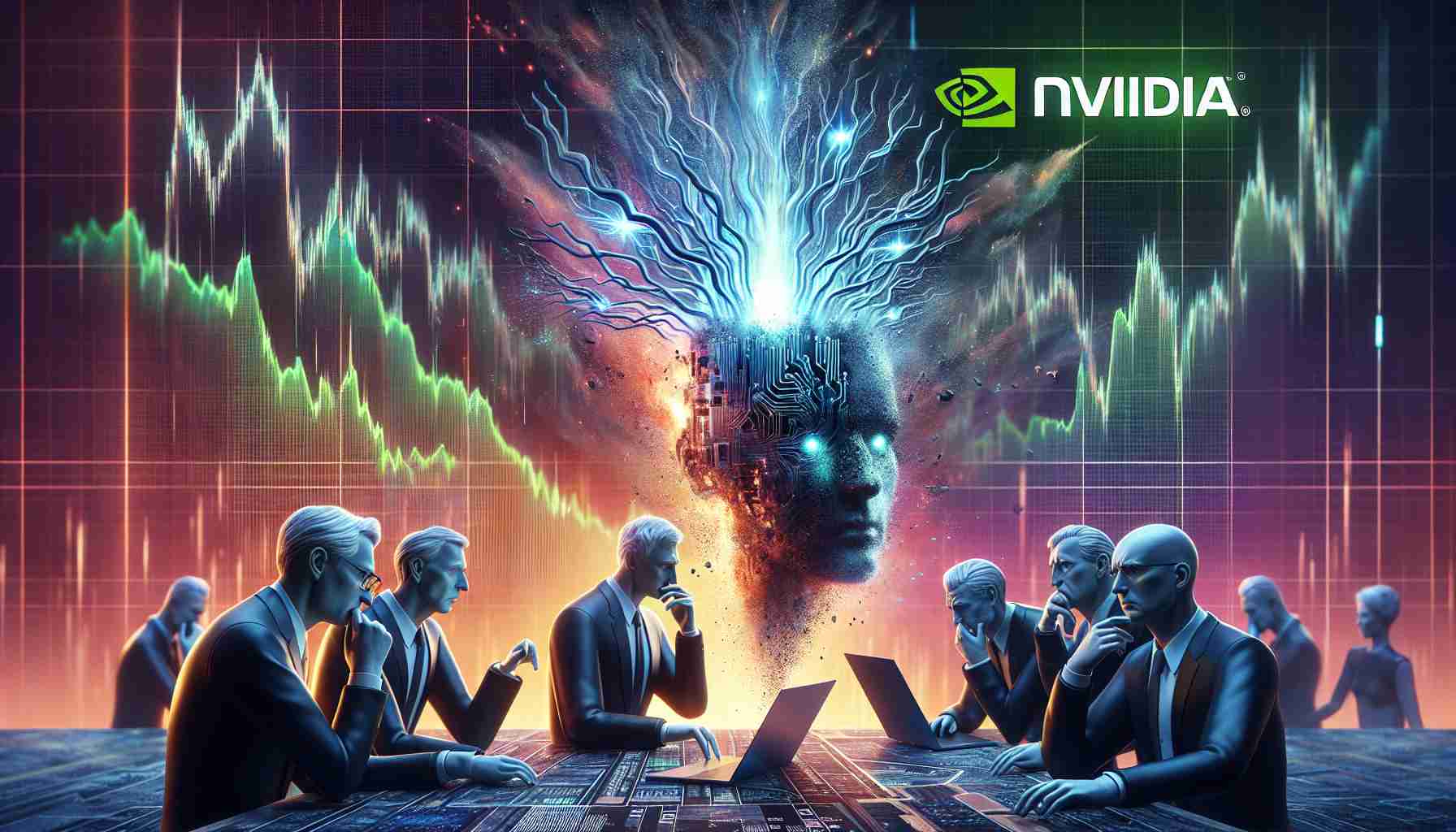Nvidia’s Recent Earnings Stir Investor Concerns Despite Strong Forecasts
Nvidia, a leading force in artificial intelligence, unveiled its earnings report on Wednesday, forecasting fourth-quarter sales above Wall Street’s estimates. However, the promising outlook fell short of the elevated expectations that have surrounded the company’s rapid ascent, leading to a mixed reaction from investors.
The tech giant projected fourth-quarter revenue to be $37.5 billion, slightly higher than analysts’ average prediction of $37.09 billion. Despite this positive forecast, Nvidia shares dipped 0.76% during regular trading hours on Wednesday, experiencing a further decline of 3.4% in after-hours trading before stabilizing at a 1.9% decrease.
Nvidia’s CEO, Jensen Huang, emphasized the transformative power of AI, highlighting the immense demand for the company’s Hopper chips and the anticipated production of the next-generation Blackwell chips. As enterprises worldwide embrace AI to enhance operations, countries are also recognizing the significance of developing robust national AI infrastructures.
The company’s third-quarter performance broke records with $35.1 billion in revenue and marked a 94% year-over-year increase. Nvidia’s data center segment contributed significantly, generating $30.8 billion as businesses invest heavily in AI chip technology to power advanced data centers.
Amid concerns about the Blackwell chip overheating, Nvidia assured investors that the design issue has been resolved in collaboration with its manufacturing partner, TSMC. Nvidia’s stock continues an impressive rally, with a 202% increase for the year to date, driven by the surge in generative AI applications.
Revolutionizing AI: The Unseen Impacts of Nvidia’s Chip Dominance
In the rapidly expanding realm of artificial intelligence, Nvidia has emerged as a towering presence, steering innovations and fueling a global AI frenzy. While news of Nvidia’s earnings and projections capture headlines, delving deeper into their revealed and less-discussed implications exposes a tech landscape fraught with profound impacts, controversies, and transformative potential.
The Silent Pulse of AI: Implications for Global Economies
Nvidia’s cutting-edge chips are not just technological marvels; they herald a shift in economic paradigms. Emerging economies view AI as a ladder to accelerated development, and Nvidia plays a pivotal role in this vision. Countries like India and Brazil are investing in AI infrastructures, leveraging Nvidia’s technology to leapfrog traditional industrial processes. This advancement, however, begs the question: is there equitable access to AI technology? Disparities could exacerbate existing economic divides, making fair distribution crucial for global stability.
Advantages and Disadvantages: Beyond the Numbers
The advantages of Nvidia’s AI chips extend beyond raw processing power. They enable breakthroughs in healthcare, such as faster drug discovery, and in environment monitoring systems that could predict natural disasters. Yet, there are downsides—chief among them being energy consumption. As AI applications grow, so does their environmental footprint, challenging companies like Nvidia to innovate sustainably.
AI’s transformative capabilities also raise privacy concerns. The chips enable sophisticated surveillance infrastructures, posing ethical dilemmas in balancing national security with individual privacy rights. How these chips are utilized internationally is a question of governance as much as it is of technology.
Controversies and Unaddressed Questions
One controversary revolves around potential overheating issues with Nvidia’s new Blackwell chips, despite company assurances. This technical hiccup, while reportedly resolved, continues to spark debates over the reliability and readiness of AI hardware under demanding conditions.
Questions regarding job displacement also surface. As AI automates tasks across industries, what becomes of the human workforce? While Nvidia’s tech creates new job sectors in AI development and oversight, it concurrently threatens traditional roles, urging policymakers to contemplate robust re-skilling initiatives.
Interesting AI Facts With Nvidia at the Helm
Here are some intriguing elements within the Nvidia landscape:
1. AI Democratization: Nvidia’s platforms are empowering small startups to compete against tech giants by offering affordable AI processing power through cloud services.
2. Cross-Industry Impact: From entertainment to finance, sectors harness AI for innovation. Nvidia’s work in automotive technology, such as developing autonomous vehicle chips, is set to redefine transportation norms.
3. Educational Initiatives: Nvidia is partnering with educational institutions to foster AI literacy, an investment not just in technology but in people. Their efforts may cultivate a future workforce fluent in AI ethics and applications.
Conclusion
Nvidia continues to ride the AI wave, reshaping industries and destinies. Its impact stretches beyond immediate profits, touching lives and altering geopolitical dynamics. While the advantages are undeniable, so too are the challenges, making it imperative for societies to critically engage with AI technologies and their ramifications. For those eager to delve into Nvidia’s world, explore more at Nvidia.



























